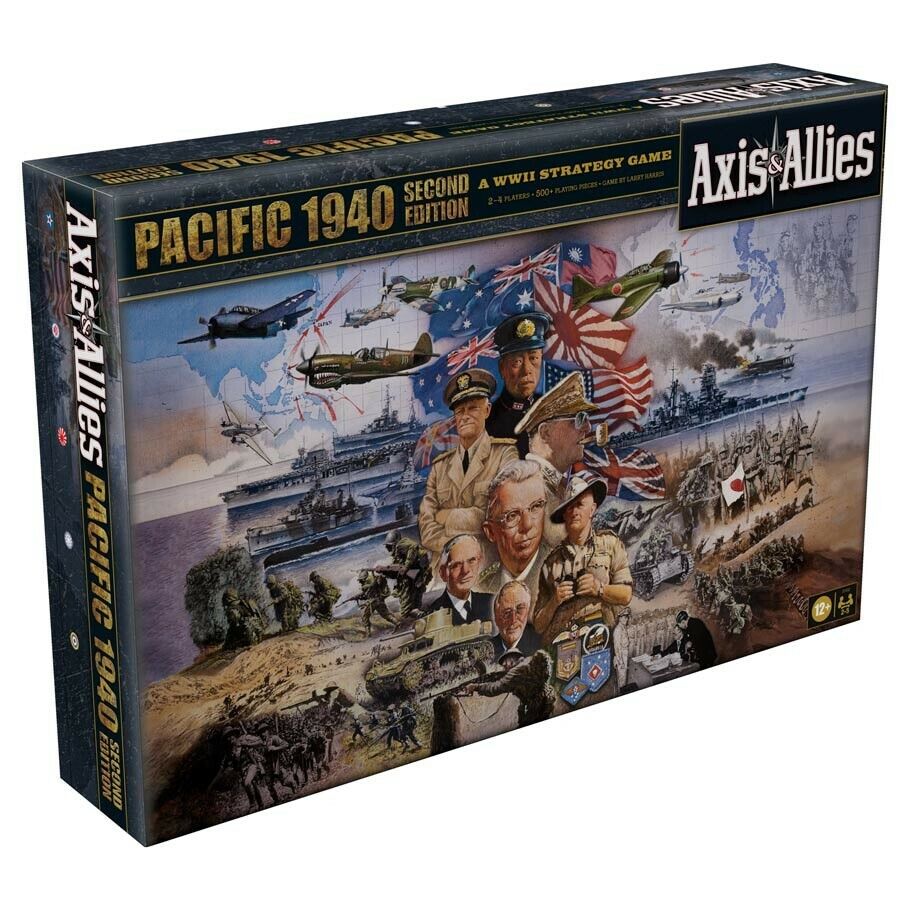Axis & Allies: Pacific 1940 (2009)
Axis & Allies: Pacific 1940
Axis & Allies: Pacific 1940 is a board game created by Larry Harris and published by Avalon Hill as part of the Axis & Allies family of games. It is considered to be a revision of Harris’ earlier game, Axis & Allies: Pacific, and features newer rules from newer Axis & Allies revisions, as well as features exclusive to this game. The game is set in 1940, with Japan and China at war, and the remaining three Allies (the United Kingdom, the United States, and ANZAC) at peace in the Pacific Theater with Japan.
Why is Axis & Allies: Pacific 1940 Popular?
Axis & Allies: Pacific 1940 is popular among board game enthusiasts due to its historical accuracy and depth. The game is significant because it allows players to experience the strategic challenges of World War II in the Pacific Theater, and it is part of the larger Axis & Allies family of games, which has a dedicated following.
Game Components of Axis & Allies: Pacific 1940
How To Setup Axis & Allies: Pacific 1940
Setup involves placing the initial forces of Japan, China, the U.S., U.K., and ANZAC (Australia and New Zealand) on the board according to the specified starting positions. Japan is already at war with China, while other Allied powers are not yet at war with Japan. The game includes detailed setup instructions to ensure all units and facilities are correctly placed at the start.
Gameplay Mechanics and Game Objective
Player Experience
Axis & Allies: Pacific 1940 offers a deep and engaging strategy experience. Players can take on the roles of Japan, China, the U.S., U.K., or ANZAC forces, each with unique challenges and opportunities. The game is known for its complex interactions between units and the strategic depth required to manage resources, declare war, and capture key territories. Games can be long, typically lasting around 6 hours, but the experience is rewarding for those who enjoy detailed strategy and historical context.
Pros
Cons
Personal Thoughts on Axis & Allies: Pacific 1940
Axis & Allies: Pacific 1940 is ideal for strategy enthusiasts and history buffs who enjoy complex, immersive board games. It requires a significant time commitment and a willingness to learn detailed rules, but the payoff is a deeply engaging and historically rich experience. This game is perfect for those who appreciate the strategic nuances of World War II and are looking for a game that challenges them on multiple levels. However, it may not be the best fit for casual gamers or those looking for a quick, lightweight experience.
We are supported by our audience. When you purchase through links on our site, we may earn an affiliate commission, at no extra cost for you. Learn more.

